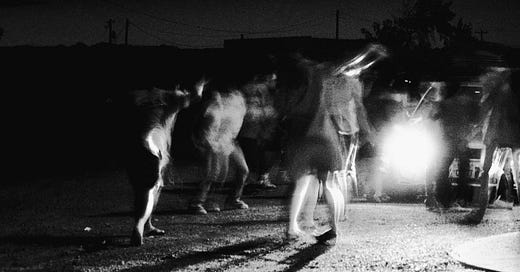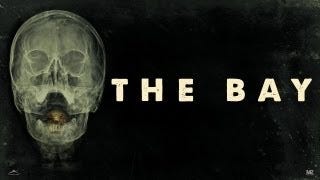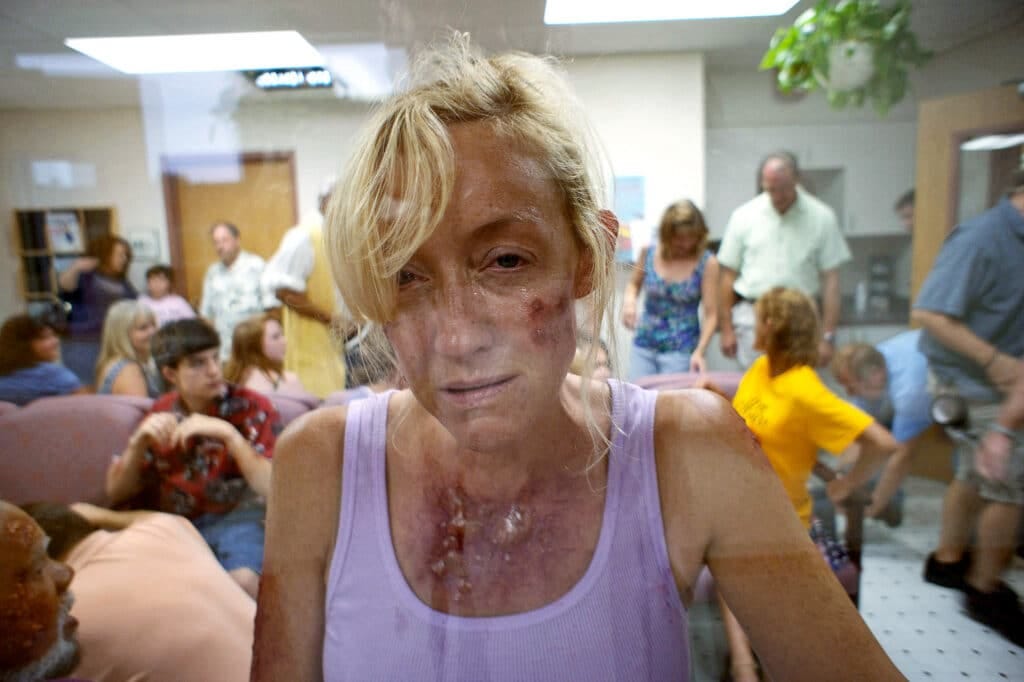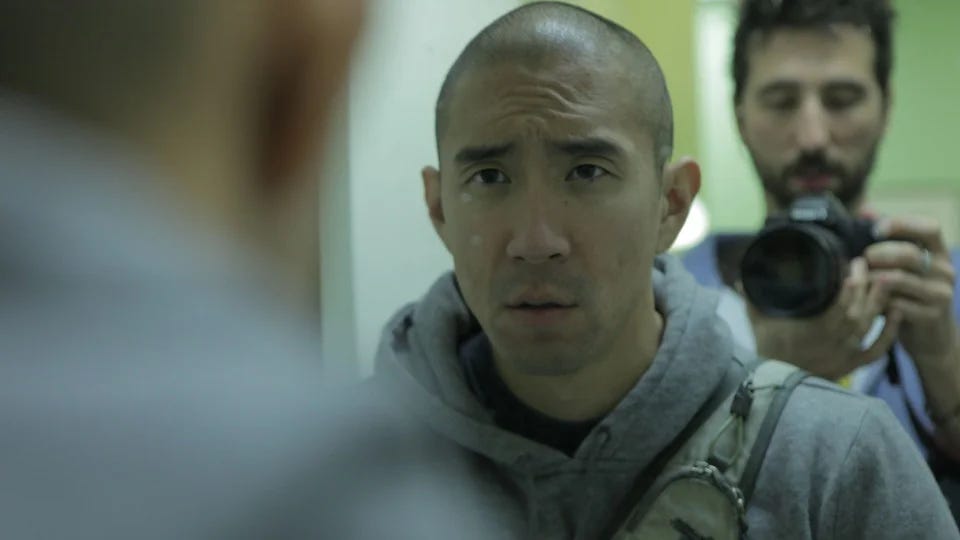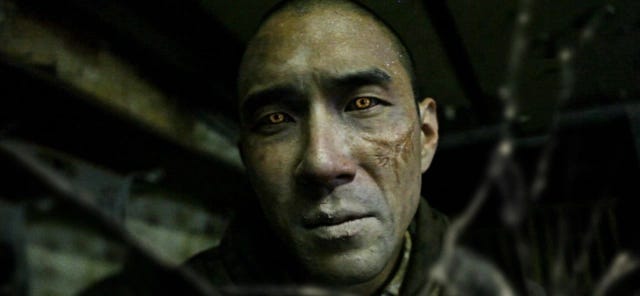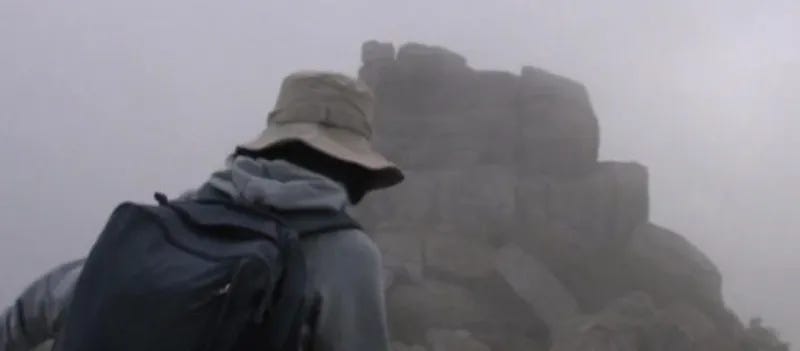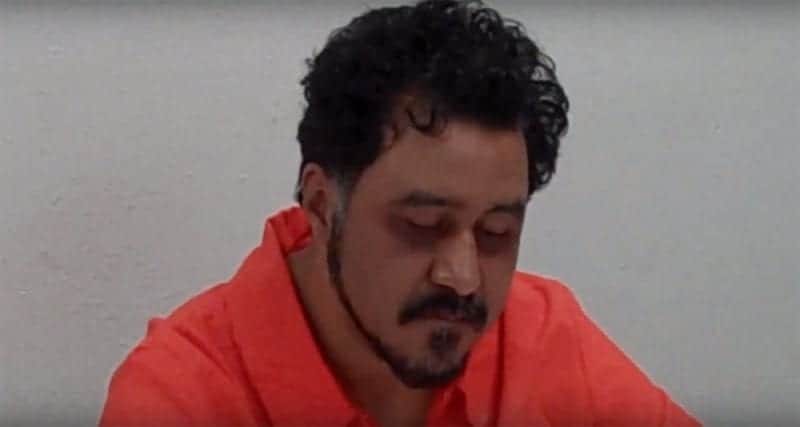5 Found Footage Horror Movies You Haven't Seen... and Absolutely Should
Drink every time someone says "Megan is Missing" in your Facebook groups (and no, she's won't on this list).
We all know the classics of the subgenre — The Blair Witch Project, Paranormal Activty, etc, etc. They’re good, great even, but they aren’t the only films out there for fans of the subgenre. Yet, every time I hit one of many found footage Facebook groups or Reddit forums, I see these same movies discussed OVER and OVER again (along with weirdly Megan is Missing, because edgelords).
I have almost 200 found footages movies I’ve watched all living in a Letterboxd list (it’s here if you’re interested), so let’s sort through it and pick out 5 at random that I think deserve far more recognition.
In This Article:
The Bay (2012) - The Gross Government Conspiracy Horror
Butterfly Kisses (2018) - The Creepy Urban Legend Horror
Afflicted (2013) - The Virus POV Horror
Occult (2009) - The Trippy Korean Alien Horror
Savageland (2015) - The True Crime Zombie Horror
The Bay (2012)
The Bay is a faux documentary found footage film that primarily follows Donna, a news reporter from a small town in Maryland who was originally trying to cover the events of the local Fourth of July celebration. Her reporting takes a turn when the downtown event turns into chaos and mass hysteria. People begin acting strangely, developing boils and open wounds, and showing up dead throughout the town.
As the situation develops, the town is shut down and it’s clear that the government intends to cover up the incident. Donna continues documenting everything to try to preserve a record of what happened and, maybe more importantly, why it happened. The CDC initially thinks it may be some type of virus, but in reality, it’s a flesh-eating parasite from the local water supply that’s quite literally eating people alive from the inside out.
“Why do I have to die this way?... No one should have to die this way!”
The body horror and effects in this film are extremely well done, graphic, and frankly nightmare material. You not only follow along with Donna as she tries to put together the pieces of what led to the tragedy, but you also meet several of its victims as they experience the extreme pain and gruesome deaths caused by these parasites. Despite the chaos, the film still feels very grounded in its approach, and as sad as it is to say, the idea of a government cover-up of an ecological disaster like this is all too plausible for comfort (case in point — Flint, Michigan).
The film comes from director Barry Levinson, who’s more popularly known for movies like Rain Man. He was initially approached to make a documentary about the Chesapeake Bay, particularly about the pollution and lack of fish, but ultimately abandoned the project after learning of another documentary that already covered the same issue. Instead he decided to put his research to good use in the form of a horror film. While promoting The Bay, he mentioned that the film contains “80 percent factual information,” which honestly is all the more terrifying.
Butterfly Kisses (2018)
I love Butterfly Kisses for 2 reasons. First, it delivers a straight-up creepy, effective found footage film, and second, it’s intelligent enough to critique its own subgenre in the process.
The film is another faux documentary horror, but this time we join Gavin York, an aspiring filmmaker who finds a mysterious box of tapes in his mom’s basement. The tapes contain the raw footage of an unfinshed documentary effort of 2 film students — Sophia and Feldman — trying to investigate the local urban legend of Peeping Tom.
According to the legend, if you stare at an abandoned tunnel in the town for an hour without blinking, the ghost of Peeping Tom will appear in the distance, but every time you blink, he’ll get closer and closer. Obviously you can’t keep your eyes open for an entire hour, at least without about a gallon of Visine and an inconceivable amount of willpower, so Sophia comes up with a unique solution. They set up their camera to film the entrance to the tunnel uminterrupted for a full hour, theorizing that the lens acts as an “eye”. Their hypothesis holds and Peeping Tom does appear, but as the camera turns off and on with each use (mimicking the blink of an eye), he creeps closer in the remaining footage of the students who are now missing.
“This is the story of Peeping Tom, and how I went looking for him. Please show this to my parents. I don't know how much longer I can go without blinking.”
Gavin York decides he wants to compile the footage, finish the film, and prove to everyone the footage is real. Through the course of the movie, we see him fight to prove the validity of the footage and ultimately encounter Peeping Tom himself.
Not only is this movie extremely creepy (the end credits scene still haunts me), but director Erik Christopher Myers uses the mockumentary style to its full advantage by basically tearing apart found footage as a subgenre. As Gavin interviews experts in film, paranormal activity enthusiasts, and people in the local community who may have known the students, he hits resistance and skepticism about the authenticity of the footage at every turn. We even get a cool cameo from Eduardo Sánchez, the director of The Blair Witch Project, who gets tapped to give his thoughts on whether or not the footage is real and in turn also agrees it appears to be a poorly conceived fake. I have a really nerdy soft spot for a self-aware film, and Myers pokes fun at every common issue of found footage films while still delivering effective tension and scares.
Afflicted (2013)
Afflicted is a film that’s a little hard for me to talk about because one of the biggest reasons I love the film is also one of its biggest plot spoilers. So bear with me as I tread lightly, but what I will say is that it takes one of the most popular horror subgenres and presents it in a fresh POV perspective.
Best friends Derek and Clif (who are also the directors of the film) decide to quit their jobs and take the trip of a lifetime around the world after learning that Derek has an aneurism and may die at any time. They arrive first in Barcelona, where they meet two other friends that are musicians, then move on to Paris. The shy Derek meets a woman named Audrey, and they spend the night together. In the morning, his friends come to his room and find Derek bitten and covered in blood.
Clif: “You should be at the hospital.”
Derek: “There's nothing they can do.”
Derek is afraid of abruptly ending his bucket list trip and refuses to go to the hospital. However, when Clif and Derek arrive to their next stop in Italy, Derek starts to show more and more bizarre and terrifying symptoms of something taking over his body.
This Canadian film blends traditional first-person found footage filming style with well-done jump scares and gruesome practical effects. The stars feel believable as they take you through their European dream trip turned nightmare, and the story delivers a twist on a classic horror element that I don’t think I’ve seen done in found footage since.
Occult (2009)
I’m just going to be real with you — Occult is by far the most bizarre film on this list. The Korean found footage movie comes from director Kôji Shiraishi, a seasoned veteran in the subgenre with a very distinct (sometimes almost cosmic) style of storytelling. I’d highly recommend several of his films, including Noroi: The Curse (2005) and A Record of Sweet Murder (2014), and if you loved either of those I’d venture you’ll love Occult as well.
The film starts out as a slow burn, focusing on a documentary crew interviewing survivors and witnesses of a stabbing incident at a famous national mountain park area. The stabbing happened on a bridge, where the supposed “crazed” man kills two people and carves an odd symbol on a third. Intrigued by the incident, Kôji Shiraishi goes behind the camera to investigate the circumstances surrounding the strange occurrence and interview the survivors.
The pace picks up and the mystery unravels when the crew meets one of the survivors, Shohei Eno, who says he’s thankful that the man stabbed him. He claims that since his attack he’s experienced what he calls “miracles”, including UFO sightings and mysterious voices, and that a mandate given by his attacker sheds light on the motive for the mass stabbing.
Its a creepy little mystery with a lot of twists and turns along the way. As an aside, we also get a guest appearance from Kiyoshi Kurosawa, the director of Pulse (2001) and Cure (1997). The effects work in the last third of the story makes the film start to feel a little over the top at times, but as with his other films, Kôji Shiraishi showcases his knack for telling a unique and layered horror story.
Savageland (2015)
The slow burn horror of Savageland takes the form of a true crime documentary, but trades the traditional “found” video for a series of still photos. The story takes us to the small (the kind of small where you can walk from one end to the other) town of Sangre de Cristo on the Arizona-Mexico border, where one night the entire population mysteriously disappears all at once.
The only survivor, Francisco Salazar, is arrested under suspicion of orchestrating a mass murder spree. However, Francisco is an avid photographer, and when his collection of 36 photos taken over the course of the night appears, they tell a very different and more terrifying story of what happened to the town. The documentary then becomes a first-person account of a population attacked by a horde of zombies.
“And suddenly, he stops being a historian, stops being an observer, and becomes an active participant. The moment he stopped being a photographer, and decided to do a single human action to save somebody else, is the moment that changed everything for him. You give up being a photographer, and you become a human being, and you lose what has kept you alive and safe through the rest of the process.”
Through the course of the film, we see each photo in chronological order, showing the progression of what went down, each one more discomforting than the last. In the moments between, you’ll find yourself truly angry for Francisco. He’s an illegal immigrant, and as such is treated by the sheriff and everyone else in the local legal system as guilty until proven innocent. Despite all the evidence that’s presented (and the distinct lack of evidence or basic logic that he could have committed such a large-scale crime spree on his own), the trial is unfairly fueled by racial bias and paranoia. In the current climate where immigration and border control are in the spotlight, Savageland is still timely with its message.
With traditional found footage, you’re getting the video of the terror in your face and fully exposed. However, Savageland only provides you static moments throughout the night. You don’t get to see what happened before the photo was taken, or after. You only get the moment — and the ability to imagine the rest for yourself is uniquely terrifying.

